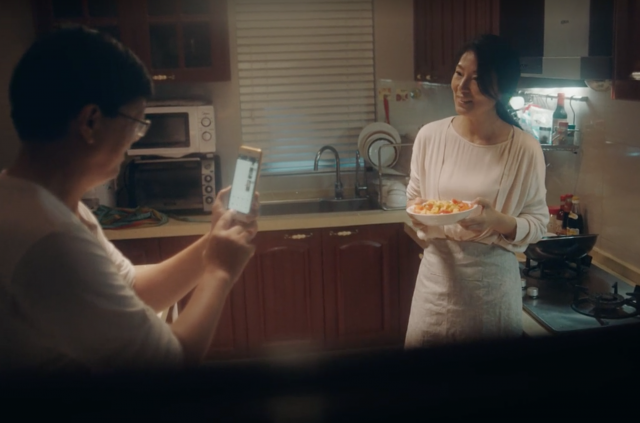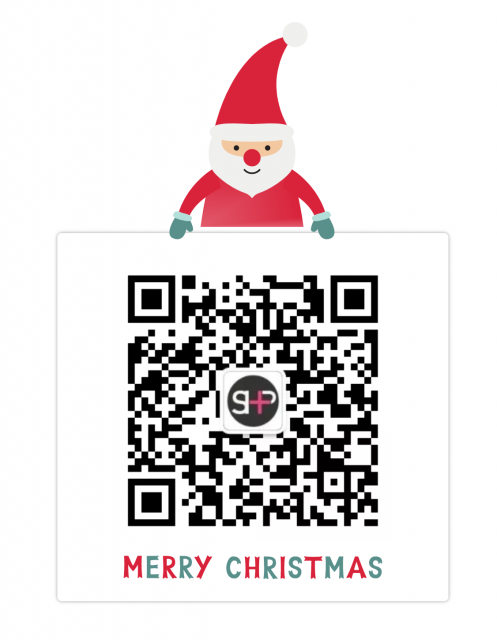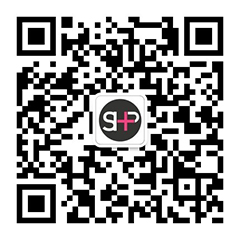A more competitive market in China means conservative marketing tactics do not always cut it. Clients must find ways be more creative to win over consumers. One tried and true method is storytelling – so how is China doing on the storytelling front? A few Shanghai-based creatives weigh in on how China’s ad industry is utilizing the world’s oldest tool to invigorate a new market.
中国市场竞争越来越激烈,这意味着传统的营销策略不一定总会发挥作用。客户必须寻找新的方式,发掘创意与真诚,赢得观众欢心。有一种方法证明非常有效,那就是讲故事,那么中国在讲故事方面表现如何呢?上海几家创意广告机构利用讲故事这一世界上最古老的传统,激发了中国广告市场的潜力。
Once upon a time | 很久很久以前
Storytelling is a universal tool. An innocent child to the most hardened soul understands a good story. It is what seals a couples’ love when we ask ‘how did you meet’ or solidifies a community’s purpose when they rally around a shared identity. Well told stories are like fibers that connect all of humanity, regardless of what language or culture you are part of.
讲故事是通用的工具。不论是很小的孩子,还是铁石心肠的人,都听得懂一个好故事。如果我们询问一对情侣是如何相遇的,他们会给你讲一个故事,这就是爱的封存,故事也让社会群体的使命更加坚固,因为他们有着共同的身份。一个好故事是连接所有人类的纽带,可以跨越语言,跨越文化。
It’s no surprise then that storytelling has become the prized tool of advertisers the world around as a way to win over the hearts and minds of consumers. In response to a pickier consumer base that needs to feel an emotional connection or a compelling reason to buy from one brand over another, Chinese marketeers are increasingly turning to storytelling tactics.
所以,讲故事已经成为广告界赢得广告大奖的渠道,也是赢得消费者青睐的筹码,这一点已经不足以让人吃惊了。中国消费者越来越挑剔,更愿意选择那些能让他们产生情感纽带和欲望的产品,所以中国的广告人也越来越倾向讲故事技巧。
Nina Kong, a strategist from Ogilvy, Shanghai, shared with SHP+ in an interview, that she has been pleasantly surprised in the last year that local Chinese brands are coming to them referencing a John Lewis campaign, which many in the ad industry revere as one of the best pieces of branded storytelling in recent years. This doesn’t mean clients take all the suggestions of the creative agencies even if they come to the first meeting with John Lewis as their reference. “There is this aspiration” Nina says she sees but clients are still not willing to risk “making their content their brand”.
Nina Kong来自上海奥美,负责广告策划,她接受了SHP+的采访,她表示,去年甚至也有中国本土品牌找到奥美,想要打造John Lewis百货一样的广告,John Lewis是近年来广告界备受尊崇很擅长讲故事的品牌,这让Nina很惊讶,也很欣喜。但即使第一次跟客户开会时,讲了John Lewis广告作参考,也并不意味着客户会采纳广告公司提出的所有建议。Nina表示,客户“有这样的渴望”,但是她也注意到,客户还不愿意冒险,直接把“把广告内容和品牌混在一起”。
China still has a tendency to fall back on ad campaigns that only reveal the product or service as picture-perfect rather than connecting it to the customers’ reality. “Good storytelling is about being honest” Ng Tian It, currently the Chief Creative Officer at McCann Worldgroup China with over 25 years experience in advertising, shared with SHP+. It takes courage for a brand to put itself out there but in the end this last and most difficult step is perhaps why China’s ads are still not making many ripples outside its own market.
中国广告依然倾向于展示产品和服务的完美状态,还不是真实消费场景。“好的故事关键是要坦诚”,Ng Tian It如是告知SHP+,他是麦肯中国首席创意官,已有25多年的广告从业经验。品牌展现真实的自己还是需要一些勇气的,但勇气正是最艰难的决定,或许正因如此,中国广告依然没能在海外市场激起太多涟漪.
A spot put out this year by McCann with more emphasis on storytelling than simply pushing the product.
Client 客户: Jomoo 九牧; Agency 广告公司: McCann; Production 制片:Black & Cameron;
Director 导演: Tao Wright; Post 后期: White Pixel
The quest for authenticity | 追求纯真
One strategy Chinese brands have been open to testing as a sort of gateway to more authentic connections between the brand and customer is the use of KOLs. KOL’s can “fill the gap between business and consumers” Mark Kong, Executive Creative Director of Amber, explained in an interview, “Chinese customers tend to trust someone they view as a ‘real person’ which they get by following them on social media”. KOLs are useful so long as the individual fits with the brand’s identity but often a client is simply attracted to the KOLs high number of followers.
中国品牌有一种策略是经得起市场检验的,那就是利用关键意见领袖当作敲门砖,建立品牌和消费者之间的真正联系。关键意见领袖可以“弥合公司和消费者之间的疏离”,Amber执行创意总监Mark Kong曾在接受采访时如是说,“中国消费者更愿意相信‘真人’,那些他们在社交媒体上关注的人”。如果关键意见领袖本人跟品牌的识别是契合的,就会发挥作用。但是有时候客户找到某个关键意见领袖,往往看重的只是其粉丝量。
The goal of authenticity is somewhat lost when the KOL does not actually match with the brand’s message and KOLs become “an extension of celebrity endorsement” Nina reiterated. “There is a reason brands use celebrity endorsement and it can work really well, but with KOLs or celebrity endorsement it comes down to brands being smart and understanding exactly which market segment they are targeting and therefore which particular brand ambassador is appropriate for their brand”.
但是,如果关键意见领袖并不是真正跟品牌所传达的信息相契合,那么品牌所追求的真实感在一定程度上也就不存在了,关键意见领袖就只是“名人代言的延伸”,Nina再次重申这一点。“品牌找名人代言是有原因的,有时候可以发挥作用,但是关键找了关键意见领袖和名人时,品牌要多花心思,知道自己到底针对的是哪一块市场,找到适合的品牌大使。

Angelababy, celebrity endorsement in recent adidas Originals winter jakcet campaign by Amber China
Authenticity by its definition cannot be faked or copied. It also cannot be rushed or forced and this is perhaps where China’s rapid pace of development does not help but actually hurts the blossoming of its creativity.
真实的本质就是不能虚假和复制,也不能仓促,不能强迫,或许中国发展步伐如此迅速,实际上并不利于创意的蓬勃发展,反而会起到阻碍作用。
On the road | 在路上
“Insight and relevancy comes from a deep understanding of contemporary culture. In this way we have to be more selective and smart in our way of storytelling”. Kong from Amber continued, “it’s not just about telling a story it’s about telling the real stories of everyday people; it’s not searching for a particular story but letting the audience tell it authentically”.
“洞察和关联性来自于对当代文化的深刻理解。因此,我们在讲故事时,必须有所选择,也要智慧思考”,Amber还表示,“不是仅仅讲一个故事,而是要讲述人们日常的真实故事;不是要搜寻某个特定的故事,而是让观众自然而然地讲述故事”。
Client 客户: Holiday Inn 假日酒店; Agency 广告公司: Ogilvy; ECD: Darren Crawforth;
Production 制片:Media Monks; Director 导演: Jason Wong ; Strategy 战略: Nina Kong, Alex Runne
This year Holiday Inn’s 4th installation of its “Moments of Joy” campaign created by Ogilvy, Shanghai is an example of authentic, customer-driven storytelling in China. The content is almost too good to be true for the brand. Nina, who is on the Holiday Inn account at Ogilvy, has taken family vacations at Holiday Inns her whole life. When strategizing for compelling content she realized her family story was the perfect fit for the brand’s message. The campaign brought in offline elements as well, adding a 3D ‘Smile Sofa’ at select Holiday Inn’s and Shanghai’s Pudong Airport, where consumers could take pictures and sit on the sofa to ‘create their own moments of joy’.
今年,假日酒店的“尽享欢乐在此刻”品牌活动第四次上演,活动由奥美上海打造,这就是一个很好的例子,展示了中国真实以消费者为导向的故事手法。广告的内容太美好了,让人觉得不像是真正的假日酒店。Nina参与了这个项目,她一直以来跟家人度假都是住在假日酒店。在策划真实故事的策略时,她意识到,其实她自己的家庭故事与假日酒店想要传达的讯息完美契合。同时,广告还融入了一些其他元素,比如在假日精选酒店和浦东机场都添置了一个3D“微笑沙发”,顾客可以在此拍照,可以坐在沙发上,“尽享属于自己的欢乐时刻”。
To find more real stories the team spent time talking with Holiday Inn staff to gather more insights and stories that were used to create content which was coming from actual Holiday Inn guests and employees. This is precisely what Erik Ingvoldstad, the founder of Acoustic Group in Singapore calls “story listening” .Clients and agencies must find a way to “humanize a very common relationship or dynamic in society that sparks people’s inner emotions, making them laugh or cry” Nina put it succinctly.
为了搜集更多真实的故事,创意团队也找到了假日酒店员工,聆听他们的看法和故事,创作内容融入了酒店宾客和员工的故事。这正是新加坡Acoustic Group创始人Erik Ingvoldstad所谓的“聆听故事”的概念,” 客户和广告公司都必须找到一种方式,“把非常常见的人际关系和社会动态变得人性化,激发人们的内在情感,让人们有哭有笑”,Nina把这种方式简单概括为此。
This Holiday Inn example, however, is just the tip of the iceberg for more 360, multidimensional campaigns. A whole other level of data storytelling, such as the campaign Uber launched with RGA Singapore this year, which China’s ad market has barely begun to entertain in its storytelling efforts.
然而,假日酒店的例子只不过是众多全方位多维度的广告活动中的冰山一角。比如今年RGA新加坡为优步打造的品牌宣传活动,展示了更为深刻的故事手法,中国广告市场仅仅刚刚开始尝试讲故事手法。
Can storytelling break cultural walls? | 讲故事会打破文化障碍吗?
How does culture factor into all of this? And do cultural differences mean that some campaigns will only be successful in certain markets? Li San Shui, the founder of Shanghai creative agency W, on the topic of culture’s role in advertising said, “Culture is what creates a community’s value system, and storytelling is the medium through which a culture is portrayed to others. Traditional Chinese culture stems from an agricultural and farming background, valuing family ties and kinship, whereas western culture prizes individualism, exploration and reflection on social issues. These stereotypical traditions and cultural preferences we then see reflected in the media landscape, and are actually becoming more important and more pronounced”.
那么,文化在这其中起到什么作用呢?文化差异是否意味着某些广告只会在特定的市场中才会受欢迎?李三水,上海创意广告公司创办人,在评价文化对广告的影响时说道,“文化,作为一个地区人类集体生存结构的价值总和,必然直接输出这个地区独有的叙事风格,中国文化本源上就是典型农耕民族的血亲价值观,所以你会发现在中国,甚至在亚太地区,所有以家人、亲人为主的故事诉求都会很受欢迎,而西方则会更多偏好个人价值,未来探索,社会哲思类的故事题材,这就是典型的文化影响,所以随着媒体分化趋势的加速,这一影响只会越来越重要,越来越细致,越来越显著。”
A spot released this year which received a lot of commentary from Chinese netizen for the story’s message.
A spot released in early November this year for China Merchant’s Bank, entitled ”The world is not bigger than a fried tomato omelette“ tells a timely story for Chinese families whose kids study abroad. The over four minutes spot was widely watched and commented on in Chinese social media. While many viewers admitted to tearing up, others were highly critical of the portrayal of this young Chinese boy studying abroad who doesn’t know how to cook a simple tomato omelette and selfishly calls his parents in the middle of the night. Whether the viewer agrees with the message, the spot is certainly a step in the direction of creating more engaging content. It has sparked a dialogue among viewers by pinpointing a relevant issue in Chinese society. All this to promote a credit card.
今年11月初中国招商银行一部名为“世界再大,大不过一盘番茄炒蛋”的广告,来的正是时候,讲述了一个海外留学生跟家人之间的故事。四分钟的广告在中国社交媒体上有着很高的浏览量和评论。诚然,很多人都承认故事催人泪下,但有些人却大大吐槽这位中国留学生,连番茄炒蛋都不知道怎么做,大半夜还要叫醒父母。虽然评价褒贬不一,但是这部广告也正是利用了故事手法来吸引观众。

Arguably, the sign of the best stories are those that all cultures can comprehend and relate to, even if it’s not about your own culture and even if you disagree with the message. This is why spots from other markets and cultures can be used as references in vastly different markets so long as the spot tells a convincing tale.
虽然有些争议,但是最好的故事要跨域文化,让所有人都理解,都能感同身受,即便是故事跟自己的文化无关,或者观众不赞成故事所有传达的信息也无妨。所以只要广告能讲述一个令人信服的故事,即便来自不同地方和文化,也可以被另外一个国家拿来作参考。
The ultimate marker for China’s ad industry will be when a Chinese spot becomes a known reference for another market’s advertising campaign. In terms of production quality, this goal may not be far off. Mark Kong from Amber tells SHP+ “it’s an exciting time to be in China because you can experiment more than in other markets”. It is precisely this laboratory environment, where outside ideas are brought in and mixed with ancient and contemporary Chinese culture, that create stories which we can all be proud to be a part of.
最终能够证明中国广告业实力的,就是哪一天中国也做出一部广告,让其他国家在做广告推广时参考。但从制作水准上,这样的目标可能并不遥远了。Amber的Mark Kong就对SHP+表示,“中国市场非常激动人心,中国比任何国家都更能让你去探索实验”。正是这样一种实验性的环境,让外面的概念来到中国,跟中国古老文化和当代文化相结合,从而创作出我们每个人都引以为傲故事,都能找到共鸣。





 BAM Music Library Brings Edgy, Indie Sounds to Chinese Creatives
BAM Music Library Brings Edgy, Indie Sounds to Chinese Creatives
